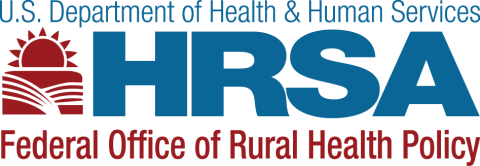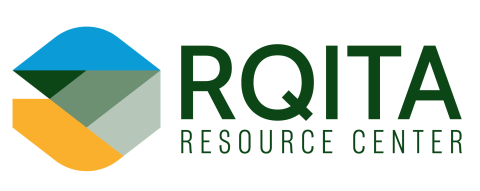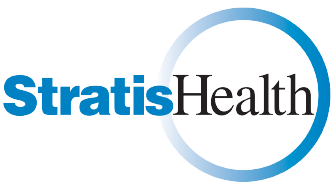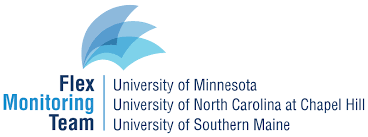This list includes key resources for State Flex Programs implementing and supporting the Medicare Beneficiary Quality Improvement Project (MBQIP).
Critical access hospitals (CAHs) should continue reporting and improving quality for the existing MBQIP Core measures. CAHs are encouraged to put processes in place so they can collect and report data from the 2025 calendar year for the measures being added to the MBQIP 2025 Measure Core Set.
Resources related to MBQIP 2025
This chart outlines the MBQIP 2025 Core Measure Set. Measures are divided into two categories: core and additional. Measures are further divided into five domains: global measures, patient safety, patient engagement, care coordination, and emergency department.
Federal Office of Rural Health Policy (FORHP)
This guide provides an overview of measures included in the MBQIP 2025 Measure Core set. This Includes information about the data collection, reporting processes, and descriptions for each of the measures.
This recording provides an overview of the MBQIP 2025 measures including reporting details, submission information, and resources for implementation.
This resource includes implementation timeline details for the MBQIP 2025 Core Measure Set. Included are data submission deadlines and data submission details.
This document describes a timeline for upcoming changes to MBQIP.
Federal Office of Rural Health Policy (FORHP)
Frequently asked questions about upcoming changes to MBQIP.
Federal Office of Rural Health Policy (FORHP)
General MBQIP Resources
This guide provides information about the current status and history of MBQIP. It is intended to help state Flex Program personnel, and relevant subcontractors understand the basics of MBQIP, including key resources available to support them in their work.
This document contains information about the methodology used to determine MBQIP Award winners each year since the awards were launched in 2015.
Flex Monitoring Team (FMT)
RQITA Monthly is a monthly e-newsletter that provides state Flex Programs and CAHs with information and support for quality reporting and improvement and highlights current information about MBQIP. Previous months of MBQIP Monthly are also available.
These summaries provide information about measures added and removed from the Medicare Beneficiary Quality Improvement Project (MBQIP) since fall 2017.
This document shares anticipated release dates for MBQIP Reports, as well as sharing a list of the most recently released reports.
MBQIP Virtual Knowledge Group (VKG) webinars, hosted by Stratis Health through August 2023, provided a networking opportunity for state Flex Programs. Recordings of the 2023 MBQIP VKGs are available in the Flex Program Forum in the Medicare Beneficiary Quality Improvement Project discussion board (login required.)
The MBQIP Measures Fact Sheets provide an overview of the data collection and reporting processes for the MBQIP measures. The goal of this resource is to capture details regarding the MBQIP measures and provide them in a basic, one-measure-per-page overview. The intended audience for these fact sheets is CAH personnel involved with quality improvement and/or reporting and state Flex Program personnel.
This list of summary statements is intended to equip state Flex program staff with talking points to address concerns and encourage participation in quality reporting and improvement programs.
View the criteria to be eligible to participate in Flex-related activities for Fiscal Year (FY) 2020. Learn exceptions and answers to frequently asked questions and access the 2019 MBQIP sample waiver template.
An MOU is required in order for any CAH to participate in MBQIP. Access current and past MBQIP MOU and consent forms as well as descriptions of when to use them.
Instructions for state Flex Programs regarding the use of FORHP-provided templates for submission of data for Emergency Department Transfer Communication (EDTC).
The Antibiotic Stewardship Detailed Data Summarization Tool was created to help state Flex programs summarize and make use of the Core and Detailed Annual Facility Survey antibiotic stewardship data. It provides both a core element summary and a question-by-question summary of CAH responses at both state and hospital levels.
States can use this information to:
- Identify gaps in implementation holding hospitals back from achieving success in implementing the 7 core elements
- Identify opportunities for enhancing antibiotic stewardship programs in all hospitals
- Identify hospitals that have successfully implemented various antibiotic stewardship program components to learn from and share with other hospitals
- Compare hospital responses to specific questions year over year to confirm consistency in responses.
Use this Excel template to assist Flex Programs in producing comparison graphs for CAHs for hospital and state Emergency Department Transfer Communication (EDTC) performance. Flex Programs can easily use data from their EDTC submission file to produce graphs for inclusion in presentations or reports for CAHs in their state. The template has been updated to reflect the 2020 changes to the EDTC specifications. There are two templates available for your use (by quarter and by measure).
This Excel template can be used by Flex Programs to produce comparison graphs for CAHs that displays hospital and state performance on Centers for Medicare and Medicaid (CMS) Inpatient (IP) and Outpatient (OP) measures. By using this template, Flex Programs can easily use data from the IP and OP data files received from FORHP each quarter to produce graphs for inclusion in presentations or reports for CAHs in their state.
This guide highlights ideas for Flex Programs to foster an informal peer mentoring environment, followed by basic guidance to develop a more intentional and structured peer mentoring program for their CAHs. Sample documents from the formal peer mentoring program in North Dakota are included.





